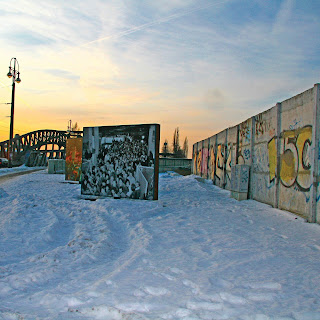West-Berlin was an island surrounded by the Wall, a very special half-city, not really part of anything, with its own way of life. It was a place where bars were open all night so the locals could plot the revolution. Where beer was cheap and sausage on a roll was considered dinner. Where the tenements still bore bullet holes from World War II and the military draft did not exist. Where the city government regularly fell over some real estate scandal and the Communist-controlled S-Bahn train did not run. Where old-timers, Turks, and students lived side-by-side but barely talked to each other. It came to life in 1949, and really after the Wall was built in 1961 and faded away in 1989
Now Berlinica has a new book out devoted to West-Berlin, Unser West-Berlin. It contains 25 stories by two dozen authors and journalists, among them Wladimir Kaminer, Harald Martenstein, Paul Hockenos, Rosa von Praunheim, Gretchen Dutschke, Michael Sontheimer, and Tanja Dückers. With a cover design by Gerhard Seyfried. The book is for both native-born and later arrivals, for those who remember, and those who wish they did.
The book is in German, and we want to make it available to everybody in America who reads German. It is sold on Amazon and, soon, also on Barnesandnoble.com. And we hope to get an English version out before Christmas 2020.
Now Berlinica has a new book out devoted to West-Berlin, Unser West-Berlin. It contains 25 stories by two dozen authors and journalists, among them Wladimir Kaminer, Harald Martenstein, Paul Hockenos, Rosa von Praunheim, Gretchen Dutschke, Michael Sontheimer, and Tanja Dückers. With a cover design by Gerhard Seyfried. The book is for both native-born and later arrivals, for those who remember, and those who wish they did.
The book is in German, and we want to make it available to everybody in America who reads German. It is sold on Amazon and, soon, also on Barnesandnoble.com. And we hope to get an English version out before Christmas 2020.
Unser West-Berlin
Language: German
Format: 6'' x 9'' cm
ISBN 978-3-96026-013-4
Suggested Retail: $20
Language: German
Format: 6'' x 9'' cm
ISBN 978-3-96026-013-4
Suggested Retail: $20


